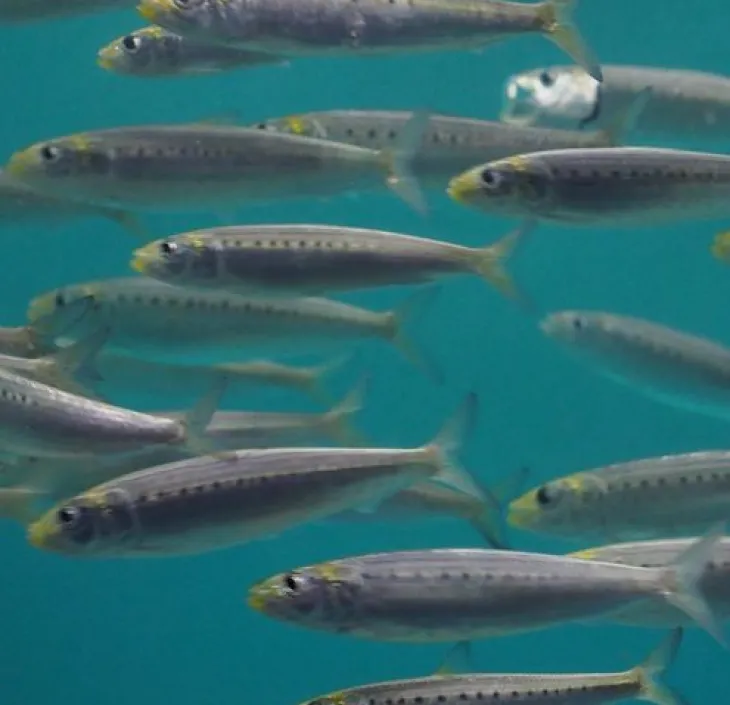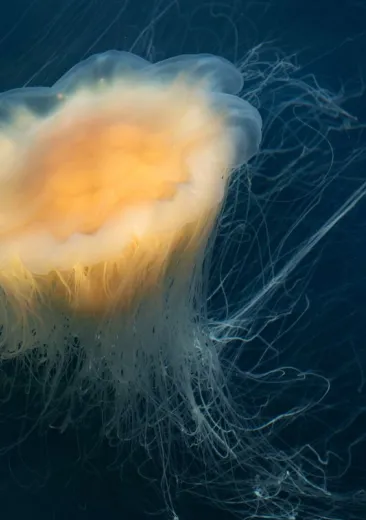Where is the animal to be found?
The sardine (Sardinops sagax), also called the California pilchard or South American pilchard is a silvery fish that lives in shoals in the first 200 metres under the surface of the sea. It is therefore said to be a pelagic fish because it can be found in open water on the high seas. It is a migratory fish that lives in the Indo-Pacific waters from southern Africa to the eastern Pacific. Around South America it is caught down to depths of about 40 m and forms large shoals in the Humboldt Current. Likewise, around North America where it forms shoals of up to 10 million individuals and migrates northwards between the waters of California and British Colombia in summer, and returns southwards in autumn and winter. Pilchards live in temperatures ranging from 16 to 23°C in summer and 10 to 18 °C in winter.
How can it be recognised?
The body is an elongated cylindrical shape, with blue-green reflections on its back and white flanks, typical of pelagic fish. Bony ridges on the operculum – called scutes – distinguish this sardine from the region’s other Clupeidae. Furthermore it is larger around New Zealand.
What is distinctive about it?
Sardines or pilchards reach sexual maturity when they are 9 cm long and most of them breed starting from their second year: sardines’ eggs and larvae are pelagic.
Threat and protective measure
The effects of global warming, which have caused water temperatures to rise, could lead to variations in population distribution areas, i.e. sardines could migrate to cooler waters.












